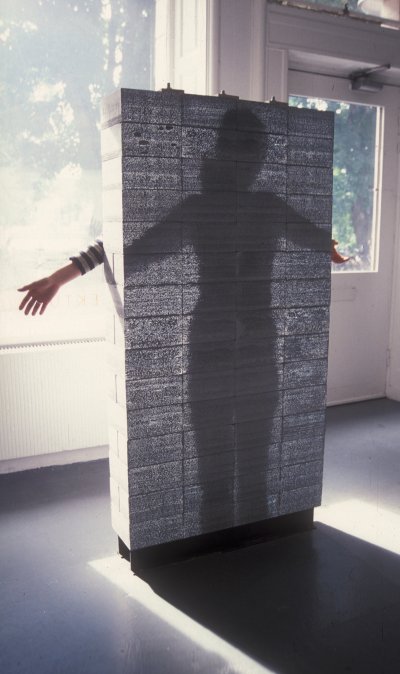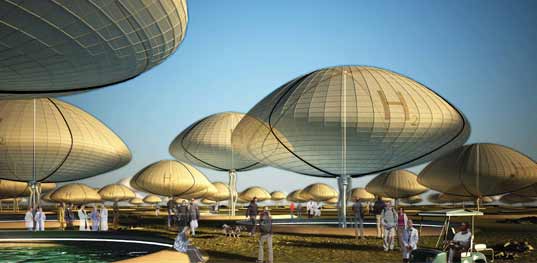Of course I’m sure I couldn’t afford it.
via Make
Mad Materials Science: Translucent Concrete Lets The Light Shine In

What’s particularly impressive about translucent concrete is that the optical fibers only make up 4% of the mixture, which is what allows (they claim) the concrete to retain the same “technical data” as normal concrete. In layman’s terms we’re assuming this means “Pretty light shine through, house not fall down.” Based on the photos of the concrete in action, and if this load-bearing claim holds up (get it?) then we imagine that this would get put to immediate use in the construction of formerly boring government buildings everywhere.
More from a google search.
Hehe, this looks pretty cool, and vaguely useful. Like you can see how big a mob as amassed outside your walled fortress, and never have a baseball-shattered window again.
Mechanical Chic – the Jewelry of Connie Verrusio
Fascinated by the way things work, Connie Verrusio creates radical new jewelry forms from leftover functions.
Connie Verrucio who uses mechanical “junk” to make fine jewelry. Gears, lugpins, screws, nails, old film–they don’t sound like the subjects of fine jewelry, but that’s just what Connie Verrusio turns them into.

“I am fascinated by all things mechanical,” she says, “and the choices I make reflect a deep reverence for the quality of workmanship, all too often a thing of the past.”

It’s steampunk without the attitude.
Cool Tool: Five Good eBooks
1) A book (even without its paper pages) is a long argument that coheres as a whole, and whose argument or story is made by integrating well-selected parts.
From Kevin Kelly, one of the founders of The Well (The WELL was an early, influential, and pioneering outpost in what later came to be called cyberspace.), an editor of Whole Earth Review 9and actin publisher after Stewart Brand left), and one of the founding editors of Wired magazine, among other things (for those who don’t know who he is). This is from his Cool Tools blog which is about Cool Tools for everyday living–sorta a continuance of the Whole Earth Review.
Check out the blog, and his other stuff.
Drugs to build up that mental muscle – Los Angeles Times
From the article:
“If there were drugs that actually made you smarter, good Lord, I have no doubt that their use would become epidemic,” Yesalis said. “Just think what it would do to anybody’s career in about any area. There are not too many occupations where it’s really good to be dumb.”
Could be the start of Timothy Leary’s “SMI²LE” (a succinct summary of his pre-transhumanist agenda: SM (Space Migration) + I² (intelligence increase) + LE (Life extension).).
More on “The Stone Spheres of Costa Rica”.
There seems to have been a lot of speculation about these since they were found, but this article cuts through the myths.
And More.
An interesting article from Natural History magazine, about perfect stone balls found in Costa Rica, in the 1950’s. The article is by an archeologist’s wife, and details the discovery, and explorations of these objects. I like that the article is from a non-scientist’s point of view, which gives us more insight into the process, than we may have had otherwise.
I’d like to know if anything else has been discovered about these in the intervening years.

A different approach to powering your home, than my previous nuclear battery one, over at Geoff Manaugh’sBLDGBLOG. Growing algae in balloons, in a way that makes it produce mucho H2. Some beautiful renderings of the project (it’s an urban design project in Iceland), and some commentary from Geoff about how depressing it is that we go to these lengths to, basically, just keep on doing what we’re already doing, instead of trying to change the fundamentals of our society.
Growing algae to produce power is an interesting concept, but really it’s useless without designing communities that use less energy. People just don’t seem to believe in frugality any more, and that’s what we need to return to.
And, no I’m not a hippy, preaching back to the land, and such, because, damnit, I love my tech, and my Schtufff, but with 6 billion people (is that right) on this planet, we really need to figure something out, don’t we?